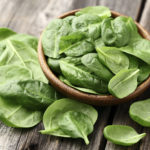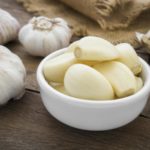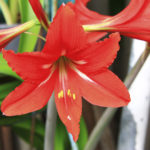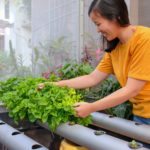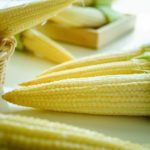Malabar Spinach
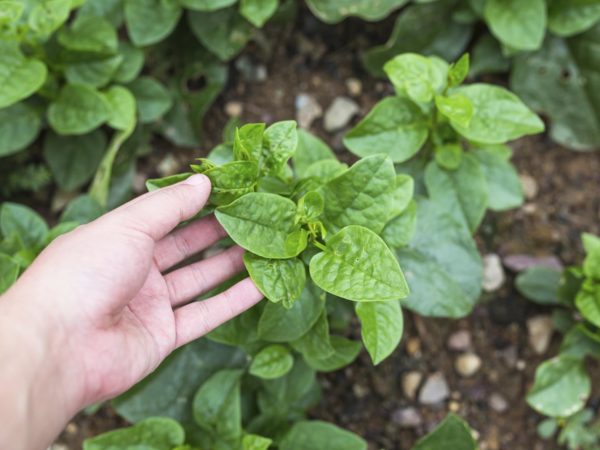
To be honest, my initial attraction to Malabar spinach (Basella alba), had nothing to do with the edible nature of the plant. I was at a fellow plant-freak’s house, and saw one in a pot growing up against a trellis. It was such a gorgeous, succulent-leaved thing, and something so unfamiliar, that I just had to inquire.
I had read about the plant before, but knew nothing about it. It starts easily from seed, so I started to grow it one spring, and found it a very satisfying plant to cultivate. A fast grower with large luscious leaves, this vine can reach up to about 30 feet or more. The plant blooms little strange pink flowers almost all through the warm season, and its little grape-like fruits, not conventionally eaten, can also be used to make purple dye.
Quite distinct in appearance from the more familiar version of spinach (and only very distantly related), this tropical plant’s leaves are large and glossy. This plant loves heat and as long as it has sufficient water and soil fertility, it will explode all warm season. This is one of its greatest virtues: while most greens wilt and wither in high heat and can be challenging for much of the season in a desert garden, hot weather is when Malabar shines – literally.
If you protect it from frost in a greenhouse, it will continue as a perennial. But if you don’t have the luxury of a greenhouse and live where winters are cold, any bit of frost will finish the vine for the season. Therefore most people will probably treat this plant as an annual.
However, the timing works great for those who live in coastal or mild climates, who usually grow regular spinach in winter, because this spinach-like leafy green grows when spinach grows bitter (spinach does not like summer heat). The plant is fairly un-picky, so as long as you have some kind of summer, you will have a vigorous-grower on your hands. But plant it in spring after all threat of temperatures below 35 degrees F.
The leaves and stems are used the most in cooking, though the stems tend to have a very mucilaginous texture. Young leaves are best: they are great in a sandwich, used as a soup thickener (especially if you use the stems) or stir-fried. There are several recipes online. I like eating them stir-fried the best with lime, chilies, coconut, garlic and ginger.
It is so versatile and productive that the garden writer Barbara Damrosch called it her “everything green,” the one she picks and adds to any dish that needs a green element for taste, appearance or a nutritional boost.
There is a gorgeous variety called “rubra” which sports red stems. It has become a favorite plant for edible landscaping; grow it once and you will easily understand why. Many online seed sources offer it.
Malabar spinach is rich in vitamins A, C, iron and calcium, and is a good source of soluble fiber.
By Jared McKinley, Guest Commentator
DrWeil.com News



